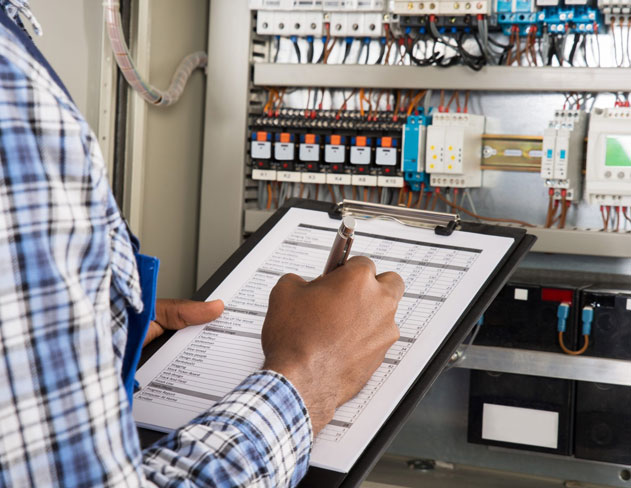Different Types of Electrical Testing
Mandatory minimum electrical safety standards (ESS) came into force for rented properties in July 2020. These regulations require landlords to have their electrical installations inspected by a qualified inspector at least every five years. The rules were introduced to ensure that electrical systems in rented properties are safe and properly maintained.
All types of electrical testing have their use, whether you’re a homeowner, landlord, or business owner. By understanding the different types of electrical testing and the requirements for each, you can make sure that your property’s electrics are safe and that you’re compliant with electrical safety regulations.

Electrical Installation Testing Procedures
Most landlords are aware that there are different types of electrical testing that they need to arrange, but many are unsure what format these tests take place in.
We’ve put this article together to help landlords understand the different types of electrical testing available, including which are mandatory and which are recommended for private landlords.
Fixed wire testing/EICR
Fixed wire testing is an inspection of all the fixed electrical installations within a building. This includes visual and electrical testing of lighting circuits, sockets and outlets, distribution boards, and any other fixed wiring. The inspection will highlight any defects with the electrical installation so that remedial work can be completed to rectify the problems and make the installation safe.
EICR legal requirements
Landlords are legally obliged to ensure that all electrical installations within their property are maintained safely, meaning fixed wire testing is mandatory. Fixed wire testing has several names including hard wire testing and electrical wiring testing. The modern term for all of these is Electrical Installation Condition Report (EICR) testing.
An EICR will be issued once the electrical installation has been inspected and will either be Unsatisfactory or Satisfactory. Under the new rules, landlords must obtain a Satisfactory EICR at least once every five years. The EICR assessment tests several components like the adequacy of earthing and bonding, wear and tear, and if any of the electrical installation is damaged.
Portable Appliance Testing (PAT)
PAT testing involves inspecting all movable electrical appliances within a property such as portable heaters, microwaves, electric kettles, etc. As with an EICR, the assessment must be carried out by a qualified and competent inspector. The inspector will carry out a series of visual and physical tests to ensure that the appliances are functioning safely.
PAT testing recommendations
Unlike EICRs, PAT Testing is not mandatory for landlords, although it is recommended that landlords inspect their electrical appliances regularly. According to Electrical Safety First, “3,667 domestic fires are caused by faulty electrical appliances and leads each year.” PAT testing helps to ensure that appliances are properly maintained and thus reduces the number of electrical fires.
Emergency light testing
Landlords must install emergency lighting in some types of properties such as houses that have been converted into self-contained flats. Emergency lighting comes on automatically if the main lights turn off due to a power failure or another electrical issue. The emergency lights will guide residents to safety e.g. if they need to evacuate the building due to a fire.
It is essential that emergency lighting is functioning correctly, which is why emergency light testing is critical. This type of electrical testing ensures that emergency lighting meets its legal requirements.
Frequency of emergency light testing
A full electrical test is required annually to check that the emergency lighting system activates correctly following a loss of power. To test, the mains supply is switched off and the emergency lighting unit is checked to ensure that it functions at the required level for the duration required to exit the building e.g. 3 hours.
If the lights fail during this period, then the failed emergency light should be repaired or replaced immediately. Annual testing ensures that emergency lighting meets its legal requirements, but we also recommend monthly inspections to ensure that emergency lights are maintained and functioning correctly.
The steps for electrical installation testing
There are a number of different steps to electrical installation testing, and more detailed descriptions can be found on our Domestic EICR page. The stages include:
- Visual inspection
- Dead testing (this can include Continuity Testing, Ring Continuity Testing, Insulation Resistance Testing, and may also include Polarity Testing)
- Live testing (this can include Earth Loop Impedance Testing, RCD Testing, Arc Detection and Surge Protection)
Summary
There are several different types of electrical testing available and understanding the various tests and requirements can be confusing. If you would like to discuss the different types of electrical testing, then get in touch with our team of specialists or visit our website for more information.

